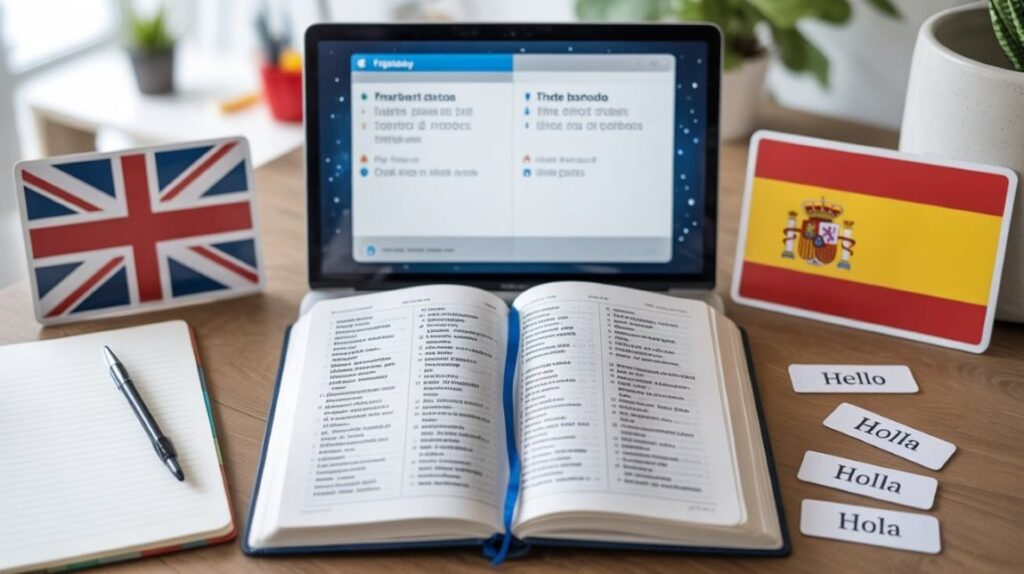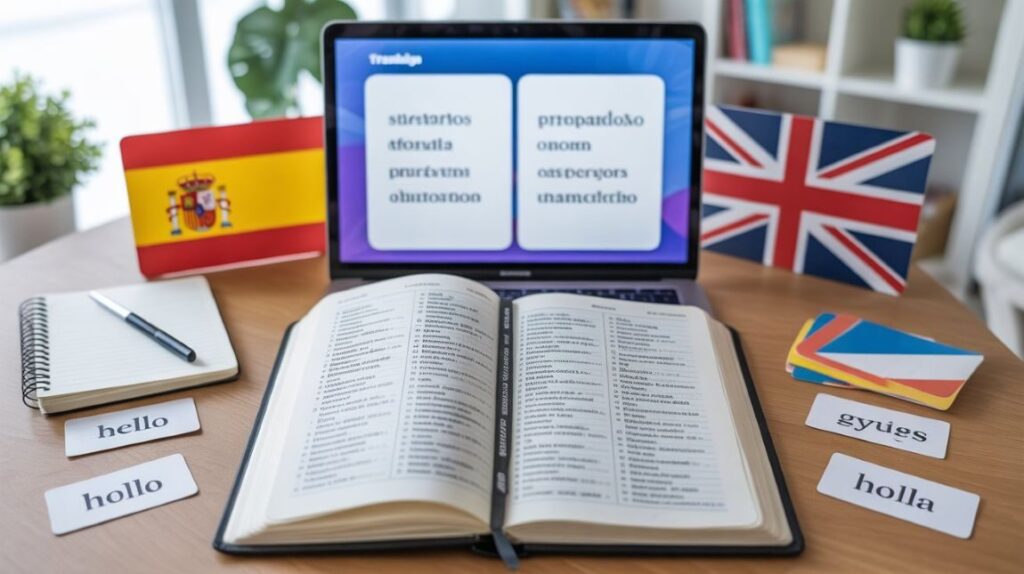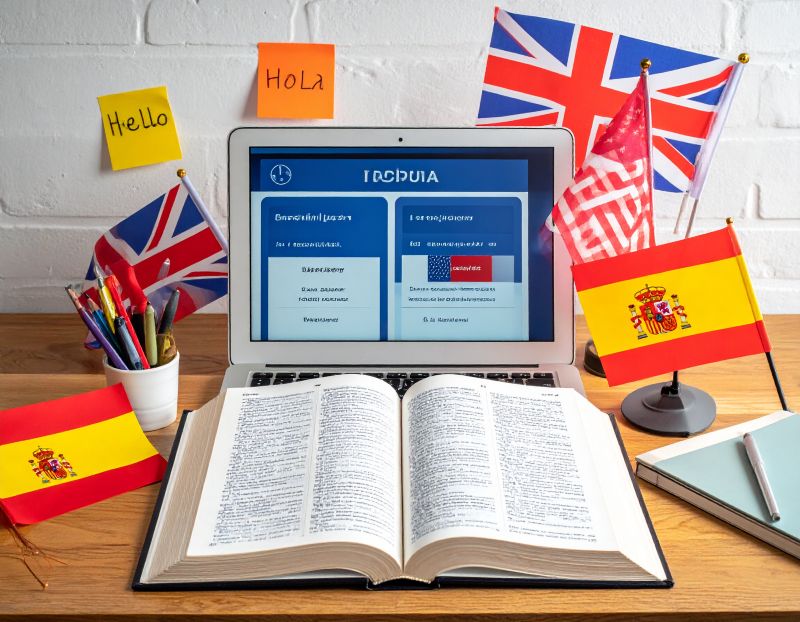Translating English to Spanish is an essential skill in today’s globalized world. With over 580 million Spanish speakers worldwide, the ability to communicate effectively in Spanish can open doors to personal growth, travel opportunities, and career advancement. Whether you are a beginner or a professional needing precise translations, this comprehensive guide will help you master translating English to Spanish accurately and efficiently.
In this guide, we’ll cover the best methods, tools, tips, practical examples, idiomatic expressions, exercises, and strategies to translate English to Spanish effectively. You’ll also find answers to common questions, real-world examples, and actionable steps to improve your translation skills.
Why Translate English to Spanish?
English and Spanish are among the most widely spoken languages globally. Translating English to Spanish is more than just converting words—it bridges cultures and enhances communication. Here’s why it’s important:
Benefits of Translating English to Spanish
- Global Communication: Engage with millions of Spanish speakers worldwide.
- Career Opportunities: Improve employability in international businesses.
- Travel Convenience: Communicate confidently while visiting Spanish-speaking countries.
- Cultural Understanding: Access Spanish literature, media, and social content.
How Learning Translation Can Boost Your Personal Growth

Learning to translate English to Spanish also develops cognitive skills, memory, and linguistic awareness. It challenges your brain to understand context, grammar, and idiomatic expressions, making you a better communicator.
Top Challenges You’ll Face When Translating English to Spanish
While translating may seem straightforward, several obstacles can make it tricky. Recognizing these challenges is the first step to mastering translation.
Grammar Differences
Spanish features gendered nouns, unique verb conjugations, and sentence structures distinct from English. Even small grammar mistakes can significantly alter a sentence’s meaning. Mastering these elements is essential for clear communication, accurate translations, and speaking Spanish confidently in everyday and professional contexts.
False Friends
Some English and Spanish words appear similar but have different meanings. For instance, “actual” in English means “real,” whereas in Spanish, “actual” translates to “current.” Understanding these false friends is crucial to avoid confusion and communicate accurately in both languages.
Idiomatic Expressions
Idioms such as ‘break a leg’ lose their meaning if translated literally. Learning the equivalent Spanish idiom is crucial to convey the intended meaning accurately and sound natural when speaking or writing in Spanish.
Context Sensitivity
Many words change meaning depending on the context. Grasping the surrounding context is essential for accurate translation and ensures your message is clear and correctly understood in Spanish.
How to Overcome These Challenges
- Use reliable tools for reference but double-check results.
- Learn basic Spanish grammar and vocabulary.
- Practice with short sentences before moving to complex texts.
- Read Spanish content regularly to understand cultural context.
Best Methods to Translate English to Spanish

Several methods can help you translate English to Spanish effectively. Combining
multiple approaches often yield the best results.
Online Translation Tools
Online tools like Google Translate, DeepL, and Microsoft Translator offer instant translations. They are ideal for:
- Short phrases
- Basic sentences
- Casual communication
Tips: Always proofread machine translations, especially for formal documents.
Accurate and Affordable Translation Services by Experts
For official documents, marketing materials, or sensitive communications, professional translation services ensure accuracy. Services include:
- Legal translation
- Medical translation
- Marketing and SEO content translation
Language Learning Apps
Apps like Duolingo, Babbel, and Rosetta Stone allow you to learn Spanish while practicing translation. They are effective for beginners and intermediate learners.
Human Practice
Engaging with native Spanish speakers is the most natural way to learn. Platforms like Tandem, iTalki, or local language clubs help practice real-life conversations and translation.
Best Practices for Accurate English to Spanish Translations
Translating accurately requires more than just knowing vocabulary. Here are essential tips:
Understand the Context
The meaning of words and sentences often depends on the situation. Analyze the sentence to convey the correct message.
Skip Literal Translation
Direct translations can sound unnatural.Prioritize conveying the intended meaning instead of relying on strict word-for-word translation for clearer, more natural results.
Learn Common Phrases
Memorize frequently used Spanish phrases such as greetings, questions, and common expressions for quick translation.
Proofread Your Work
Always review translations for grammar, syntax, and spelling errors to ensure clarity.
Use Spanish Dictionaries
Digital or physical dictionaries help clarify meanings and find synonyms for more precise translation.
Tools and Resources for Translating English to Spanish
Several tools and resources can help you translate English to Spanish effectively.
Google Translate
A convenient, user-friendly translation tool that supports voice, text, and camera input for fast and accurate translations on the go.
DeepL Translator
Provides context-aware translations with natural, fluent phrasing, making it ideal for translating longer texts accurately and smoothly.
Microsoft Translator

Perfect for mobile use, offering seamless real-time translations for conversations on the go.
SpanishDict
Great for mastering vocabulary, verb conjugations, and idiomatic expressions effectively.
Language Learning Platforms
Platforms like Duolingo, Babbel, and Rosetta Stone are excellent for improving Spanish skills while reinforcing translation practice.
Practical Examples of Translating English to Spanish
Understanding examples helps reinforce learning. Here are practical translations with idiomatic expressions:
Simple Phrases
- English: How are you?
- English: Thank you very much.
- Spanish: Muchas gracias.
Everyday Conversations
- English: Where is the nearest hospital?
- Spanish: ¿Dónde está el hospital más cercano?
- English: I would like a cup of coffee.
- Spanish: Quisiera una taza de café.
Business Phrases
- English: Please send the report by tomorrow.
- Spanish: Por favor, envíe el informe para mañana.
- English: We need to schedule a meeting.
- Spanish: Necesitamos programar una reunión.
Idiomatic Expressions
- English: Break a leg!
- Spanish: ¡Mucha suerte!
- English: Piece of cake
- Spanish: Pan comido
Exercises to Improve English to Spanish Translation
Practice is key to mastery. Try these exercises daily:
- Translate Daily Phrases: Write down 10 English phrases each day and translate them.
- Read Spanish Articles: Translate short paragraphs to English, then back to Spanish.
- Use Flashcards: Memorize verbs, nouns, and idiomatic expressions.
- Speak Aloud: Practice translating sentences and saying them out loud.
- Engage in Conversation: Chat with native speakers online to practice live translation.
Learning English to Spanish Translation Effectively
To master translation, combine structured learning with consistent practice.
Start Small
Start learning with simple sentences, common greetings, and daily expressions—perfect for beginners to speak confidently, communicate effectively, and master everyday conversations in English.
Use Flashcards
Using digital or physical flashcards is an effective way to memorize vocabulary quickly, boost retention, and enhance language learning for beginners and advanced learners alike.
Read Spanish Content
Reading books, articles, and blogs enhances comprehension, broadens vocabulary, and exposes you to diverse sentence structures, helping you write and communicate more effectively.
Practice Speaking
Practicing speaking reinforces grammar and vocabulary, making translation easier and more intuitive while improving overall fluency and confidence in real-life conversations.
Join Language Communities
Interact with native speakers, online or in person, to practice real-life conversations, improve pronunciation, and gain confidence in using the language naturally.
Frequently Asked Questions
1: What is the easiest way to translate English to Spanish?
Use online tools for quick translations and practice common expressions daily.
2: Can I rely solely on translation apps?
Apps are helpful for casual communication, but professional documents require human review.
3: How long does it take to learn Spanish through translation?
Consistent practice of 30–60 minutes daily can show results in 3–6 months.
4: Are there free resources for English to Spanish translation?
Yes. Tools like Google Translate, SpanishDict, Duolingo, and BBC Languages offer free resources.
5: How can I avoid translation mistakes?
Understand context, avoid literal translations, proofread, and consult dictionaries or native speakers.
Conclusion
Translating English to Spanish is not just about words—it’s about understanding culture, context, and meaning. By using reliable tools, practicing consistently, learning idiomatic expressions, and engaging with native speakers, anyone can become proficient in translation. Whether for personal growth, travel, or career advancement, mastering English-to-Spanish translation opens a world of opportunities.











